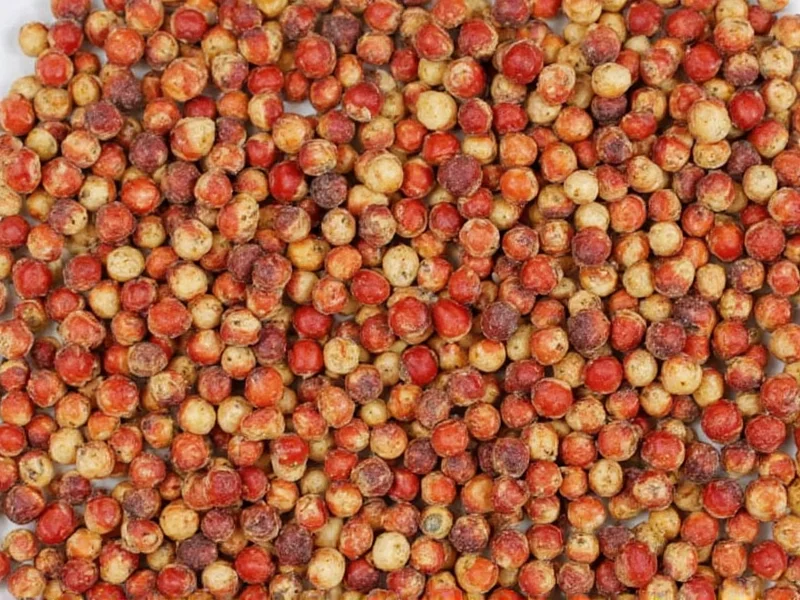When you bite into a peppercorn, that immediate tingle and warmth you feel isn't just culinary magic—it's pure chemistry at work. The spiciness of peppercorns comes primarily from piperine, a naturally occurring alkaloid that makes up 5-9% of black peppercorn's composition. This compound triggers specific heat-sensitive receptors in your mouth called TRPV1 receptors, which your brain interprets as a spicy sensation.
The Science Behind Pepper's Heat
Piperine (C17H19NO3) is the key player in peppercorn's characteristic bite. Found predominantly in the outer layer of the peppercorn, this crystalline compound activates the same vanilloid receptors (TRPV1) that respond to heat and capsaicin from chili peppers. However, piperine creates a distinctly different sensation—more of a gradual, warming heat that builds slowly rather than the immediate fiery punch of capsaicin.
What makes piperine fascinating is its molecular structure. While capsaicin has a long hydrophobic tail that binds strongly to receptors causing prolonged burning, piperine's structure creates a milder interaction. This explains why black pepper's heat feels more like a pleasant warmth that dissipates relatively quickly compared to chili peppers' lingering burn.
Piperine vs. Capsaicin: Understanding the Difference
Many people confuse peppercorn's spiciness with that of chili peppers, but they're chemically distinct experiences:
| Compound | Source | Scoville Rating | Heat Sensation | Duration |
|---|---|---|---|---|
| Piperine | Black peppercorns | 10,000-100,000 SHU | Warming, building gradually | Shorter duration (1-3 minutes) |
| Capsaicin | Chili peppers | 10,000-16,000,000 SHU | Immediate burning | Longer duration (5-15+ minutes) |
The Scoville scale measures spiciness, but it's important to note that piperine and capsaicin affect different receptor subtypes. This explains why black pepper registers between 10,000-100,000 Scoville Heat Units (SHU), yet feels significantly milder than a jalapeño pepper (2,500-8,000 SHU) which contains capsaicin. The different molecular interactions create unique sensory experiences.
Why Do Peppercorns Produce Piperine?
From an evolutionary perspective, piperine serves as a natural defense mechanism for the Piper nigrum plant. This chemical deters herbivores and insects from consuming the fruit while still attracting birds, which are essential for seed dispersal. Birds don't have the same TRPV1 receptors as mammals, so they don't experience the burning sensation—allowing them to eat the peppercorns and spread the seeds without damaging them.
Interestingly, piperine also enhances the bioavailability of other nutrients and compounds—a property traditional medicine systems have utilized for centuries. Modern research confirms that piperine can increase the absorption of substances like curcumin by up to 2,000%, explaining why black pepper is often paired with turmeric in culinary and medicinal applications.
Factors Affecting Peppercorn Spiciness
Several elements influence how spicy your peppercorns will be:
- Maturity level: Green peppercorns (unripe) contain less piperine than black (partially ripe) or white (fully ripe) varieties
- Growing conditions: Soil composition, climate, and elevation affect piperine concentration
- Processing method: Sun-drying black peppercorns increases piperine content compared to water-processed white pepper
- Storage conditions: Light and air exposure gradually degrade piperine over time
- Grind size: Freshly ground pepper releases more volatile compounds than pre-ground spice
For maximum heat impact, use freshly cracked black peppercorns within 15 minutes of grinding. The volatile oils and piperine compounds begin oxidizing immediately upon exposure to air, diminishing both flavor and spiciness.
Common Misconceptions About Pepper Heat
Several myths persist about peppercorn spiciness:
- Myth: All peppercorns are equally spicy
Fact: Black peppercorns contain significantly more piperine than white or green varieties - Myth: The spiciness comes from the seed
Fact: Piperine concentrates in the outer fruit layer, which is why white pepper (with outer layer removed) is milder - Myth: Heat level indicates quality
Fact: Optimal piperine content depends on intended use—some culinary applications require more subtle heat
Understanding these distinctions helps explain why freshly ground Tellicherry peppercorns from India might deliver a more complex, robust heat than pre-ground pepper from your supermarket shelf—factors that matter when exploring why is black peppercorn spicy or what makes white peppercorn less spicy than black.
Practical Applications of Pepper's Chemistry
The unique properties of piperine have practical implications beyond just flavor. When cooking with peppercorns, consider these science-backed tips:
- Add black pepper toward the end of cooking to preserve volatile compounds
- Pair with turmeric-containing dishes to boost curcumin absorption
- Store whole peppercorns in airtight containers away from light and moisture
- Use a pepper mill rather than pre-ground spice for maximum piperine delivery
- Combine with healthy fats (like olive oil) to improve piperine solubility
These techniques optimize both the flavor experience and potential health benefits associated with piperine, addressing common questions about why freshly ground pepper tastes spicier or how to maximize peppercorn heat in cooking.











 浙公网安备
33010002000092号
浙公网安备
33010002000092号 浙B2-20120091-4
浙B2-20120091-4